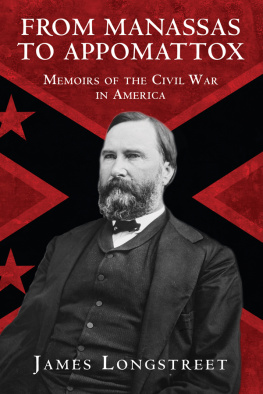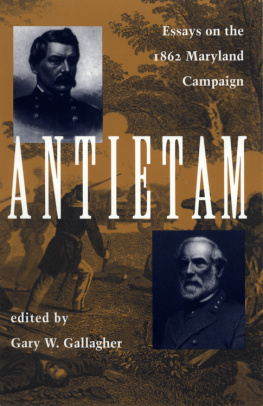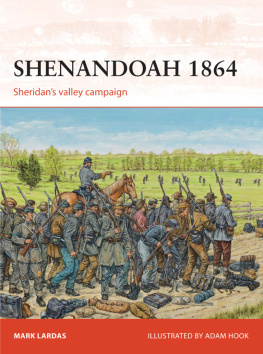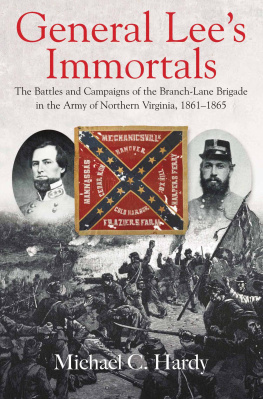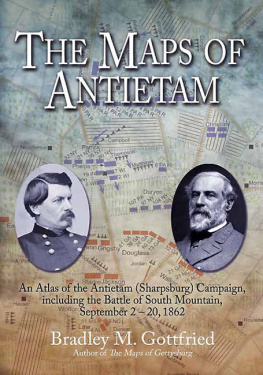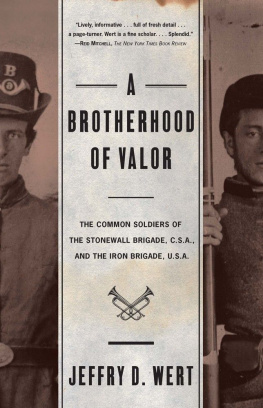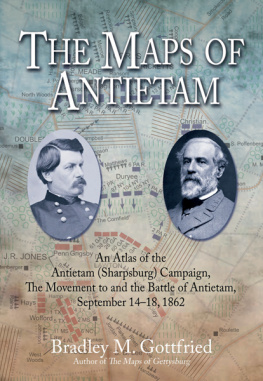

This book is dedicated to my mom,
Constance Mary Falco.

CONTENTS
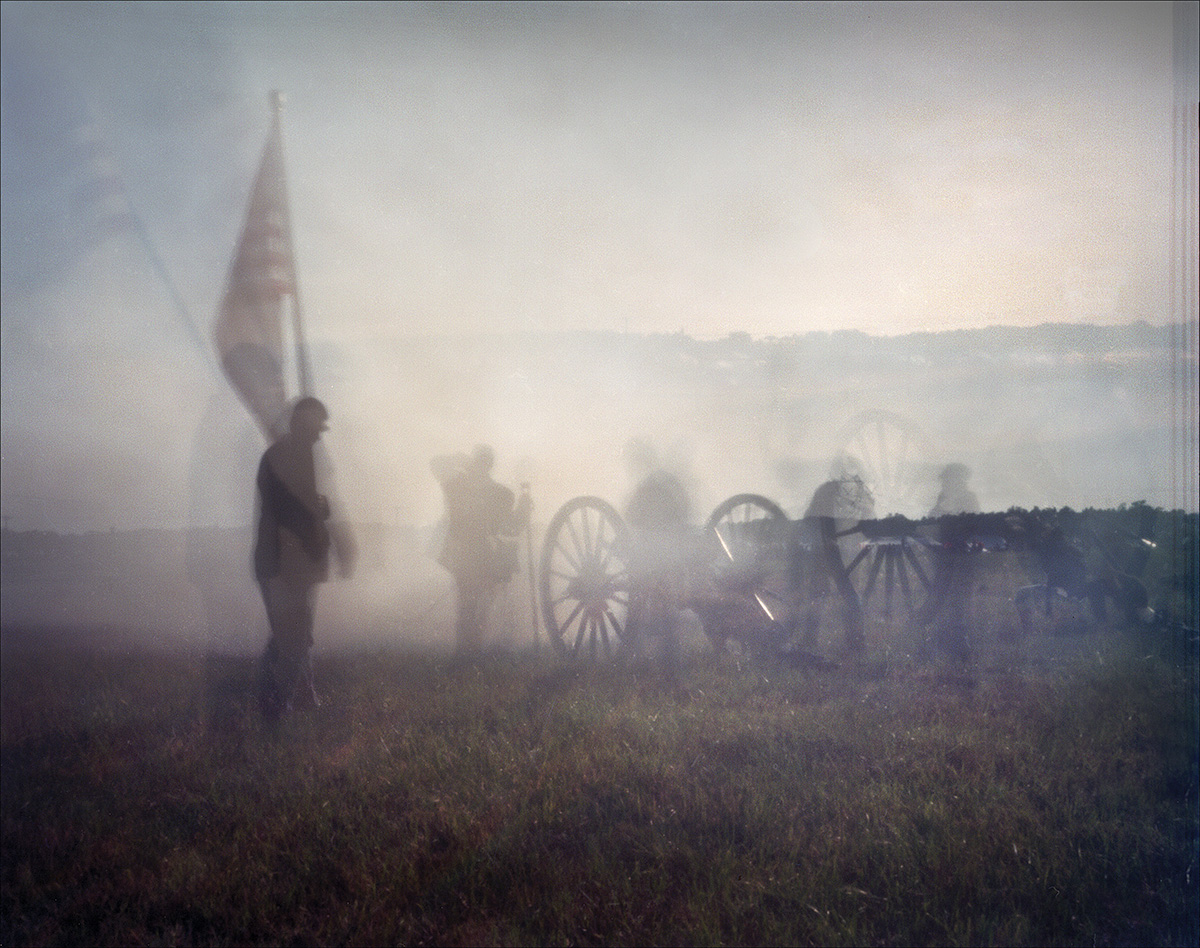
Gunners at Gettysburg
This book describes a four-year, battlefield-to-battlefield journey along the anniversary tracks of the American Civil War. The arduous and exhilarating trek crossed landscapes that remain, preserved by virtue of their terrible history, very much as they were 150 years agooases from modernity, as pristine and scarred as the great war left them, hallowed and haunting. The past is present on these battlefields.
The images in the book were created with large-format pinhole camerashandmade wooden boxes with no lens, no viewfinder, and no shutterthat would have seemed primitive even at the time of the Civil War, but that, in uncanny ways, turned out to be the perfect devices for this project.
The cameras tiny, fixed aperture creates a canvas where details are obscured. The minuscule amount of light entering the camera requires a long exposure time that pushes the images into the ambiguous terrain between landscape and dreamscape. Wind blows, leaves rustle, clouds move, the earth turns. The pinhole photograph breathes with space and time.
Soldiers journals and memoirs describe the battlefields as dreamlike, and that is how they appear through the patient eye of the pinhole camera. Time is stretched and, ultimately, upended. The images invite lingering contemplation.
The book is also a photographic chronicle of the legion of dedicated reenactors, impeccably attired and historically attuned, who recreated scenes at one battlefield anniversary after another, heightening the eerie dj vu of this expedition of commemoration.
I had not expected, setting out, that these living historians would figure importantly in this project. But, on my very first battlefield visit, to Manassas, Virginia, for the 150th anniversary of the Battle of Bull Run, I encountered a band of Virginians portraying the units in which their great-great grandfathers had fought a century and a half before. I marveled at the remarkable nexus of people, place, and history that was unfolding before my eyes.
The impressions of these reenactorsso many descended (like those Virginians at Manassas) from the very soldiers whose uniforms they wearbrought a dimension of verisimilitude and narrative drive to the project and, through the prism of the pinhole, emerged not as documentations of people involved in play acting or costume drama, but as ghostly evocations of the spirits that hang over these fields.

Cedar Creek Battlefield, Virginia
It was not too long before I found myself becoming one of them, a Civil War photographer arriving with his primitive wooden box camera on these fields of battle, squinting into a pinhole, seeing before me timeless, epic landscapes, and the terrible, transitory struggle that left them sacred ground.
I would also be following in the footsteps of Civil War photographers. I certainly had an easier time than some of the famous chroniclers of the war, like Matthew Brady and Alexander Gardner. Nineteenth-century photography required a mobile darkroom and also required that the images be processed in the field. The equipment was cumbersome, the process delicate. Although Id be using a camera even more rudimentary than Bradys, my use of modern film stock made the work easier to accomplish. The other advantage I had, that Brady and Gardner didnt, was that thankfully there would be no lead flying in the air as I worked.
This was, for me, a personal odyssey along the length and breadth of Americas deepest wound. I trust the images here will evoke the wonder, the awe, and, ultimately, the peace I found on my pilgrimage through this consecrated domain.

Battlefield at Raymond, Mississippi
A number of years ago, after years of shooting exclusively digital, I felt I needed to slow down as a photographer. I wanted to trade, at least occasionally, the ease, precision and instant gratification of digital photography for something that required me to spend more time with the subjectto really immerse myself in the meaning and composition of each frame.
I was missing the mystery of photography, the magic that happens in the box. I wanted to put some of the guesswork and intuition back into my image making. This led me to the pinhole camera. To shoot with a pinhole camera is, quite literally, to get back to basics.
What I did not anticipate is that stripping back to this most basic method of shooting would somehow yield images that also seemed more elemental. I soon realized these simple cameras had a remarkable capability for rendering landscapes. The cameras somehow looked deeper into the subjects, and I actually found myself experiencing these landscapes and the photographic process in a deeper way.
The pinhole camera has no lens, per se. The tiny fixed aperture creates a soft infinite focal plane, allowing the feeling of the landscape to come through. Where digital photography is like good nonfiction, sharp and detailed, pinhole photography somehow has the profound emotional honesty, the subjective truth of a great novel. Each image carries with it a story, or many different stories.
The Journey
These discoveries with the pinhole camera happened to coincide with a subject that had been an interest of mine since childhood: the American Civil War. In 2009, as the 150th anniversary of the war approached, I inadvertently tumbled down the rabbit hole of Civil War history. My only desire, after reading a small librarys worth of this material, was to visit the wars battlefields. And I would bring the pinhole camera.
Each trip along this journey, each battlefield, was preceded by a good deal of research. After consuming a number of books on the subject, I would arrive at each location with a detailed shot list of images I hoped to find along the way. The shot list became my logistical map, but often the list would lead me to unexpected discoveries.
On a typical day, I would shoot anywhere from 30 to 50 images, changing film in a portable darkroom in my car or hotel room. At night, when the pinhole camera became impossible to work with, I would spend the evening loading film for the following day, writing in my project journal, and mapping out the next days journey.
With the pinhole camera, Cartier-Bressons instructive phrasethe decisive moment, referring to the fraction of a second in which a photo should be takenturns into the decisive minute or minutes. Patience is the greatest virtue when working with these rudimentary cameras.

McLemores Cove, Chickamauga, Georgia

Next page


